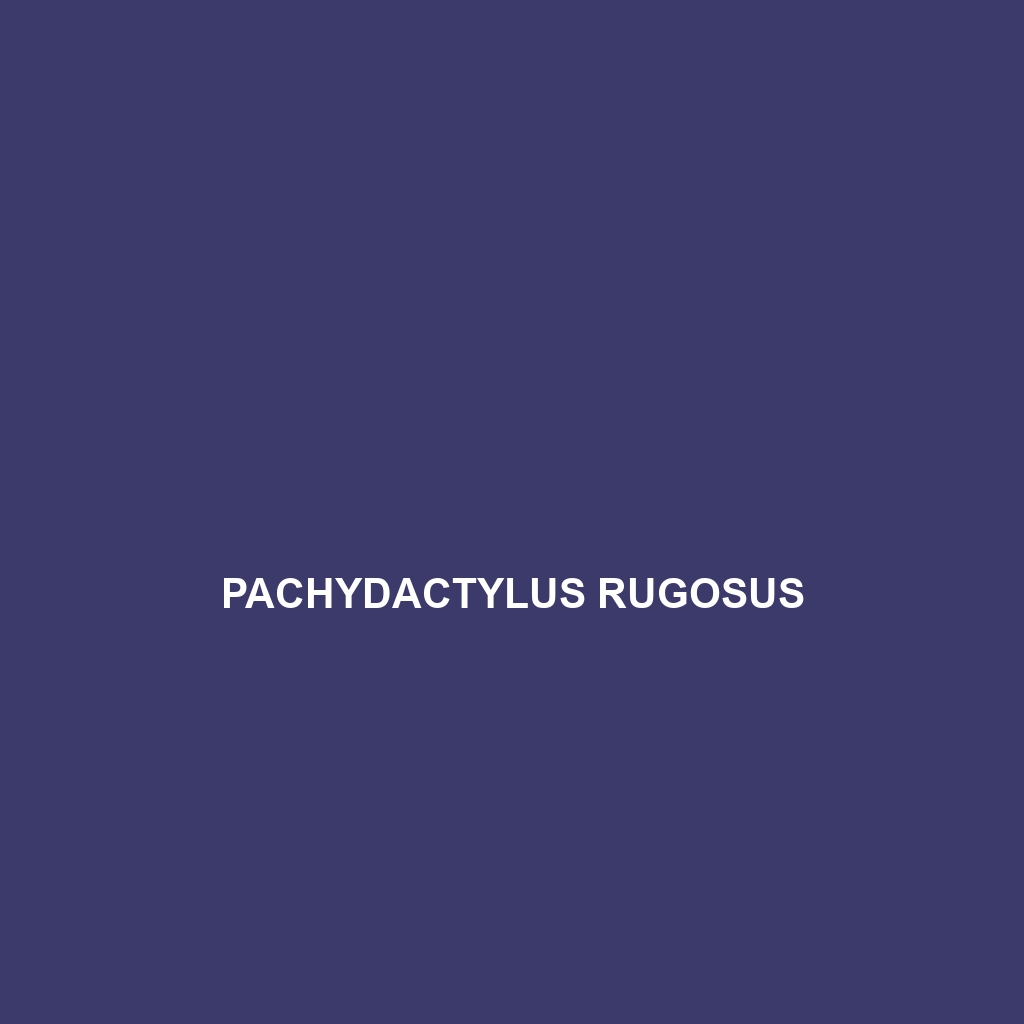Common Name
Pachydactylus rugosus
Scientific Name
Pachydactylus rugosus
Habitat
Pachydactylus rugosus, commonly known as the rough-toed gecko, primarily inhabits the semi-arid regions of southern Africa. This species is extensively found in a variety of habitats, including savannas, woodlands, and rocky outcrops, predominantly in Namibia, Botswana, and parts of South Africa. The climate of these regions is characterized by warm temperatures and seasonal rainfall, creating an environment where these reptiles can thrive. Additionally, they favor areas with ample cover, such as rocks and crevices, which provide shelter from predators and extreme weather. The geological composition of their habitats—often featuring sandy soils and scattered vegetation—contributes significantly to their survival and reproduction.
Physical Characteristics
The Pachydactylus rugosus exhibits distinct physical traits that set it apart from other gecko species. Adult geckos reach sizes of 10 to 15 centimeters in length, featuring a robust body and a distinctive flattened tail, which aids in balance and maneuverability across rocky terrains. Their skin displays a characteristic mottled pattern, with shades ranging from pale brown to grey, allowing for effective camouflage against the substrate. One of the unique features of Pachydactylus rugosus is its enlarged toe pads, which provide excellent grip and sprawl when navigating its habitat. These adaptations not only enhance its climbing abilities but also facilitate quick escape from potential threats.
Behavior
Diet
The diet of Pachydactylus rugosus consists primarily of insects, classifying it as an insectivore. This species demonstrates a preference for various arthropods, including crickets, beetles, and moths, using its acute sense of sight to hunt effectively at night. Its feeding pattern involves active foraging in the foliage and on the ground, where it hunts by ambush or swift capture. The ability to consume a wide range of insects allows Pachydactylus rugosus to adapt to varying food availability in its habitat, showcasing its versatility as a predator.
Reproduction
The reproductive cycle of Pachydactylus rugosus is marked by specific breeding seasons, usually occurring during warmer months when conditions are more favorable for raising young. Females typically lay clutches of two eggs, which are deposited in concealed locations within the sandy or rocky substrate. The incubation period for these eggs ranges from 40 to 60 days, after which hatchlings emerge measuring approximately 5 centimeters in length. Parental care is minimal, as the young are independent from birth, relying on their instincts to navigate the challenges of their habitat from an early age.
Conservation Status
The Pachydactylus rugosus is currently classified as Least Concern according to the International Union for Conservation of Nature (IUCN) due to its wide distribution and stable population. However, like many species, it faces threats from habitat loss due to human encroachment and climate changes affecting its natural environment. Conservation efforts remain crucial, focusing on habitat preservation and mitigating human impact. Understanding the delicate balance of its ecosystem is vital in ensuring the long-term survival of this species.
Interesting Facts
One fascinating aspect of Pachydactylus rugosus is its capability to regenerate its tail after losing it as a defense mechanism. This unique adaptation allows the gecko to escape predators with a significant disadvantage, ensuring its survival. Another interesting fact is their ability to change color slightly based on environmental conditions, helping them blend into their surroundings more effectively. Such adaptations highlight the species’ evolutionary prowess, enabling them to thrive in challenging habitats.
Role in Ecosystem
Pachydactylus rugosus plays a crucial role in its ecosystem as both a predator and prey species. By controlling insect populations, these geckos contribute significantly to the ecological balance within their habitats. Additionally, they serve as a food source for larger predators, thus maintaining the food web dynamics. Their activity helps to aerate the soil and disperse seeds, promoting vegetation growth and enhancing the health of their environment. In these ways, Pachydactylus rugosus demonstrates the intricate interplay of species within its ecosystem.
This detailed species description provides comprehensive information about Pachydactylus rugosus, ensuring it is informative and optimized for search engines while adhering to the required structure and tone.
